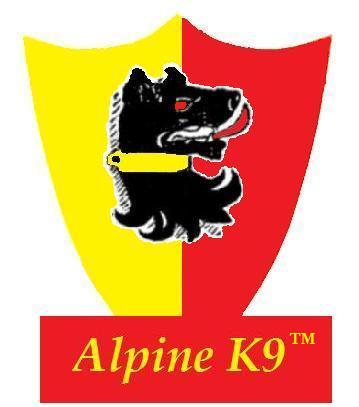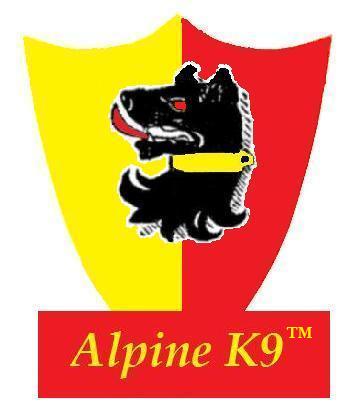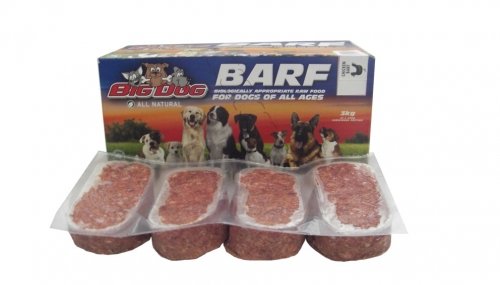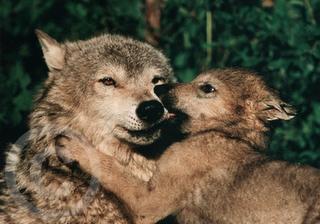ALPINE SAFETY K-9 INTERNATIONAL
THE ORIGINAL IMPORTER OF "CZECH" BORDER PATROL
GERMAN SHEPHERD DOGS
Superior Service and Working German Shepherd Dogs for a reasonable cost based on: TRADITION, QUALITY, EXPERIENCE.


AlpineK9™ and AlpineK9.com™ are marks owned by AlpineK9 © 2011 AlpineK9
Raw Diet
How do I feel about raw diet.
By Zdenek "Hans" Blabla Owner of AlpineK9
http://www.alpinek9.com
RAW DIET??????????
I believe that raw diet is better then anything from a bag. Commercial dog food is by its processing stripped of live enzymes and amino acids. It is often full of minerals and vitamins which are often there but are not bio-available,...meaning they are in form not digestible by dog. Like concrete contains calcium, but if you eat concrete the calcium is not going to be digested. This example may be limping, but it illustrates my point. Take a stake and kibble and put them on a separate plates on the sun. What will happen after 7 days there. Kibble is still there unchanged and meat is rotten and full of maggots. Thus you may think well, kibble is better and to that I say; why would you want to feed the dog what not even maggots want to eat!? Raw diet however is natural, balance and bio-available. Wolfs, and dogs after them, for tens or hundreds of thousands of years did not eat kibble. Wolf ate meat ,...BUT wait dog ate leftovers. When the cave man learned how to cook the meat and other food he did it in order to ease the digestion of it. Proteins get broken by heat and are more bio-available, minerals from bones leach into water during cooking process and are more bio-available. Less energy is then spent on digestion and can be used elsewhere and the organism needs less food. And so on and on. It the food is not cooked too much, then the enzymes and amino acids are still there. What does this has to do with our dog? Well let's ask how did he dog became domesticated form a wolf?
Well the less tame wolves followed the man and scavenged the throwaway leftovers, that is mostly cooked leftovers. They bred and produced some less some more tame offspring. More tame got closer and benefited more and they war breeding and getting closer and closer until they lived with the man and man liked it, because the new dogs gave him warning against intruders and help him to hunt. This started at least 30,000 years ago and some believe that it was more then 100 000 years ago. That would be at least 20 000 generations of modification of the wolf into dog, which I mind you are still the same species. One thing which was modified was digestive tract to eat more easy bio-available cooked food. Thus domesticated wolf or as we call it now dog is bred unintentionally to digest cooked meat and other food. 20 thousands or maybe 75 thousands generations is a lot of genetic modification. Thus I do believe that to a dog, home made cooked food, with lightly cooked meat, is superior to 100% raw diet. Little raw now and then is beneficial but not 100% raw. I believe dog's "stomach" is geared to cooked food.
RAW MEAT for PUPS???
DO NOT!!!
What about pups. Again I believe cooked meat is better then raw. Mother wolf in wild would eat meat predigest it and then when pups licked her face regurgitated it. This meat was predigested and sterilized by acids of the mother's stomach.
OK pups wolf an dog are usually 100% on milk up to 3-4 weeks. That is a perfect food for them. The first milk the colostrums will immunize the pup against the diseases and bacteria which the mother immune system successfully dealt with. However if you IMPORT a pup the immunity of such pup will not be in tune with your environment since endemically the strains of bacteria and viruses are different in every geographical area. ( Have you heard of Montezuma revenge when you go down to Mexico?) Thus it is important to give a pup time to adjust to new microbes from your environment.
In wilderness the wolf cub at 4-5 weeks will wonder about and start to pick leftovers form the older wolfs and eat regurgitated, predigested and sterilized and full of digestive acid and very bio available barf. We can simulate this by cooking the meat and blend it into mush. Some people insist on feeding these young pups raw meat. But that is misguided since it actually causes malnutrition because pups in this age do not have acids strong enough digest raw food and to defeat the micro culture of potentially harmful microorganisms and are losing protection of the maternal antibodies from colostrums and do not get benefit of predigested barf full of strong acids which will help to defeat the microorganisms which the pup or cub introduced to the digestive system when scavenging around the den or cave. Again we can simulate this by cooking the food for our pups. This above mentioned regurgitation will be main source of feeding for the pup until they are 12 -20 weeks. Thus in nature the food is sterilized by this barf of the mother for wolf cubs until that age. Now if you have bought or IMPORTED the pup form distant area and got it at 8 weeks that puppy is naturally resistant to microbes from where ever they came from. Than if you insist on feeding raw at this age your imported pup you will introduce him to bunch of new and to his immune system unfamiliar microbes and on top of it you will probably starve the pups to certain degree of some nutrition which not even wolf cub's digestive juices at this age can get from the raw meat. And remember, dogs are for thousands of generations on cooked diet. The only way to remedy lack of regurgitated food from the mother, in my opinion, is too cook the meals for your pup. I would venture to say that it is absolutely mandatory to do this until about 6-8 mo. Campylobacter is usually what puppies get from raw meat if fed raw diet too early. Reason being
they don't have strong enough acids in their stomach until around 6-8 months old.
In the wild the mother dog regurgitates food to puppies and they get the benefits
from her strong stomach acids which kills this Campylobacter, Escherichia colie, Salmonella,....
If after the 8 months and after reading all this you still insist on feeding the dog raw go ahead , it is better then kibble of highest grade. But it is never as good as lightly cooked meat whose recipe I have mentioned before. Here it is again.
Chicken meat with flat bones and all of the cartilage or organ meat like beef hears , cooked pork , gizzards,.....hard boiled eggs. Cook the meat with pasta, and add a pinch of sea salt. Also add into it 1 blended tablespoon of raw parsley and carrots or apple or even pineapple, live Greek yogurt or kiefer and fish oil. Meat should be only LIGHTLY cooked. Boil marrow soup bones. Bone marrow is a great stuff for pups/dogs. Remaining bones are great CHEW TOYS. soup is great for bones and joints.
Cooked chicken feet, turkey necks and pigs feet (available in Chinese and Mexican supermarkets) is also great! = High contend of Glucosamine, chondroitin, MSM , and hyaluronic acid (Joint builders).
I also recommend live yogurt or live kefir(Greek yogurt, goat milk yogurt) with live culture
mix into the food about 1 table spoon per dog/pup.
If you must feed Raw then also read this which I have copied for Wikipedia:
While the intense heat used in manufacturing pet food destroys any potential bacteria, raw meats may contain bacteria that are unsafe for both dogs and cats.[29] The US Government reported that in 2006, 16.3% of all chickens were contaminated with Salmonella.[30] A study on 25 commercial raw diets for dogs and cats detected salmonella in 20% and Escherichia coli in 64% of the diets. However, the E. coli strain that can cause severe illness O157:H7 was not tested for.[31] An example of the severity of E. coli H157:O7 infections can be seen in affected greyhound racing dogs fed raw meat as part of their diet. Known in greyhounds as "Alabama rot", the disease causes severe vasculitis, cutaneous necrosis, renal failure and death. It should be noted that racing greyhounds are typically fed raw meat classified as "not for human consumption", which may contain higher than normal levels of bacteria.[32]
Raw feeders consider the risk overblown and claim that the stomach enzymes and short intestinal tracts of dogs and cats allow them to handle harmful bacteria.[33][34] For example, an outbreak of salmonellosis caused by tainted commercial dry dog food led to 62 cases of human infection but no reports of the disease affecting animals fed the tainted food.[35] On the other hand, there has been a reported case where two cats fed a raw diet developed salmonellosis and died as a result.[5] A veterinarian from the National Animal Poison Control Center suggests that the diarrhea in animals that raw feeders attribute to detoxing could be caused by pathogens such as Salmonella, E. coli, Clostridium and Campylobacter.[5] The purchase of good quality meat from reputable sources and proper food safety practices such as defrosting meat in the refrigerator and not leaving food out for too long can reduce the proliferation of bacteria present in the meat.
Raw meats may also contain harmful parasites. As with bacteria, these parasites are destroyed during the heat processing of manufactured pet foods. Some raw diet recipes call for freezing of the final product, which greatly reduces (but does not necessarily eliminate) the potential for parasites. According to a former European Union directive,[36] freezing fish at -20°C (-4°F) for 24 hours kills parasites. The U.S. Food and Drug Administration (FDA) recommends freezing at -35°C (-31°F) for 15 hours, or at -20°C (-4°F) for 7 days.[37] The most common parasites in fish are roundworms from the family Anisakidae and fish tapeworm.[38] While freezing pork at -15°C (5°F) for 20 days will kill any Trichinella spiralis worm,[39] trichinosis is rare in countries with well established meat inspection programs,[40] with cases of trichinosis in humans in the United States mostly coming from consumption of raw or undercooked wild game. Trichinella species in wildlife are resistant to freezing. In dogs and cats symptoms of trichinellosis would include mild gastrointestinal upset (vomiting and diarrhea) and in rare cases, muscle pain and muscle stiffness.[41]
A survey of accredited zoos worldwide showed a slightly increased risk of parasites and diseases in animals that are carcass fed as compared to commercial food fed. However, the researchers suggested that that may be caused by increased opportunistic preying and infected live preys may be the source of contamination.[42]
Other related link:

